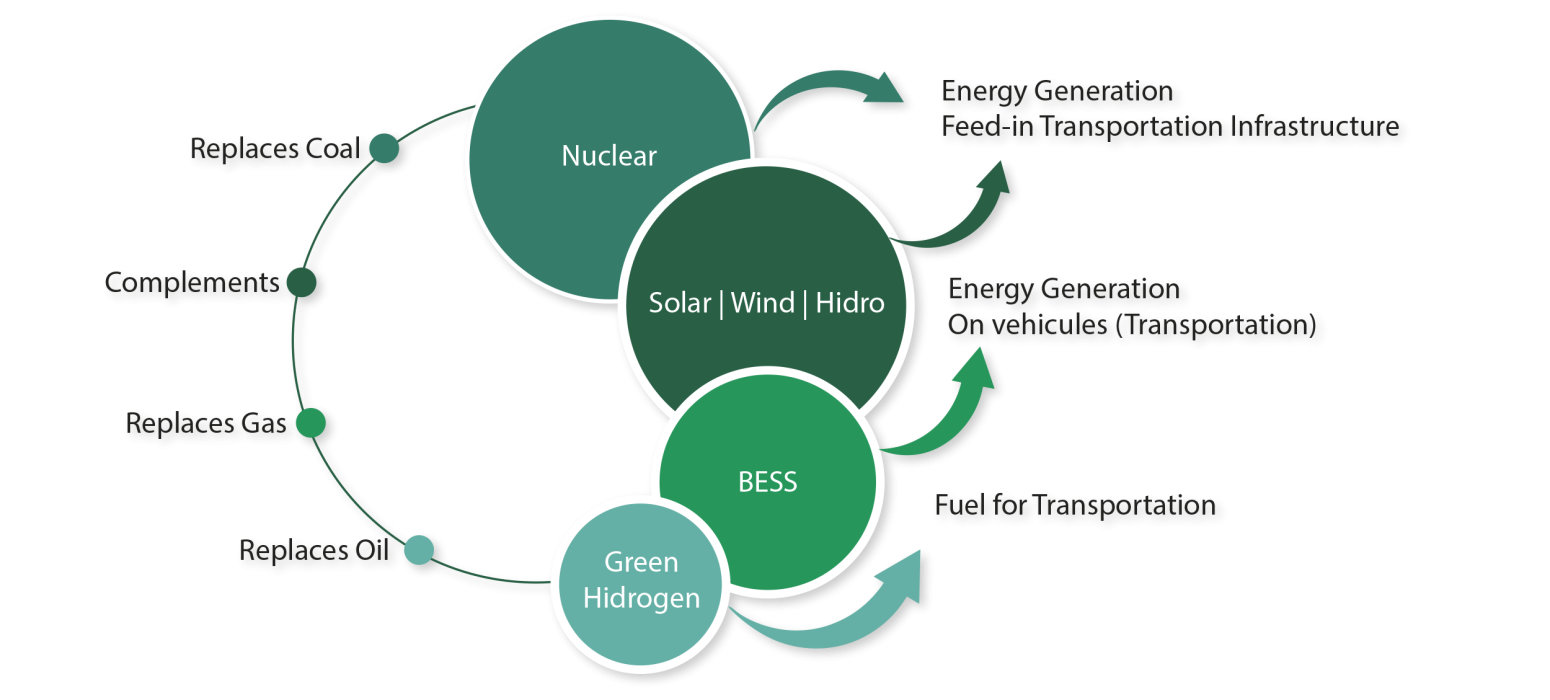
We are passionate entrepreneurs committed to supporting clean air, land and sea. We recognize humans’ failure to cleverly balance supply and demand and avoid self-satisfaction, wounding our planets long-term sustainability, and with it, that of human-kind.
We understand energy is one of the main foundations for economic development and believe clean power generation, controlled growth, and circular economies will prevail; humankind and nature will survive, and a better world will flourish”
Photovoltaic technology is well known, simple to build, and so long as its minerals are not scars, will continue being produced with higher efficiencies and cost effectiveness.
In theory, our sun can power the world. Photovoltaic modules are the basis for this type of power generation. Deploying it with minor environmental impact is essential to developing our energy infrastructure and sustaining a prosper economy for all.
Our planet rotates around its axis at 1.674 Km/hour. Solar energy on each part of the world is thus available only a limited number of hours a day. Storing part of its energy for later use provides longer hours of emission free energy and are thus essential to a net zero economy.
Wind is free yet not always available. Measuring its stability, frequency, and characteristics is lengthy, and frequently highly complex. Predicting a wind farms projected power generation, especially considering the earths dramatic weather changes caused by global warming is a task for specialized professionals.
The farther we go to locations never explored, the harder it gets to install wind projects. Overcoming these challenges, and the transportation, logistics and construction ones requires detailed, and commensurate analysis of experts.
Whilst our planet struggles under extreme weather conditions and our economy fights to hold-on, our energy industry faces huge challenges.
Producing cost-effective, smart storage solutions, accessing the minerals at reasonable costs, and deploying them across the planet whilst ensuring their recyclability requires enormous political and economic efforts.
Green hydrogen is created by a process called electrolysis, wherein electricity from renewable sources is used to split the hydrogen molecules from the oxygen molecules in water. Heavy industries (steel, cement, etc.) and long-haul transport (boats, trucks, etc.) will benefit enormously from green hydrogen.
The hydrogen value chain is complex and capital-intensive. Many of the industry’s segments are not yet developing and those technologies and regulations that are developing fast are moving so quickly that staying up to date can be a challenge.
Nuclear energy fears often stem from concerns over the risk of accidents, nuclear waste disposal challenges, and a potential for proliferation of nuclear weapons.
Many countries still safely generate electricity with this technology. Many others have unforeseeably decommissioned thousands of megawatts before understanding if they could cover their own demand with other technologies. This, in turn, has forced the reactivation of coal and gas fired power plants, and in many cases, forced the reactivation of nuclear power plants developments despite popular beliefs and concerns.
In a world with increasing demand for steel, copper, gold and other minerals, a minimum capacity to recycle them, and an increasing demand for clean energy, nuclear energy is highly promising. It produces base-load power alike coal and gas but with zero CO2 emissions. Thorium reactors for example, are safer, and can be constructed and scaled significantly quicker than uranium. Thorium is extremely abundant, safer to dispose, and has a significantly shorter radioactive disposal time whereas it cannot be used to build nuclear weapons. Its passive cooling system also makes it the safest nuclear systems ever designed.